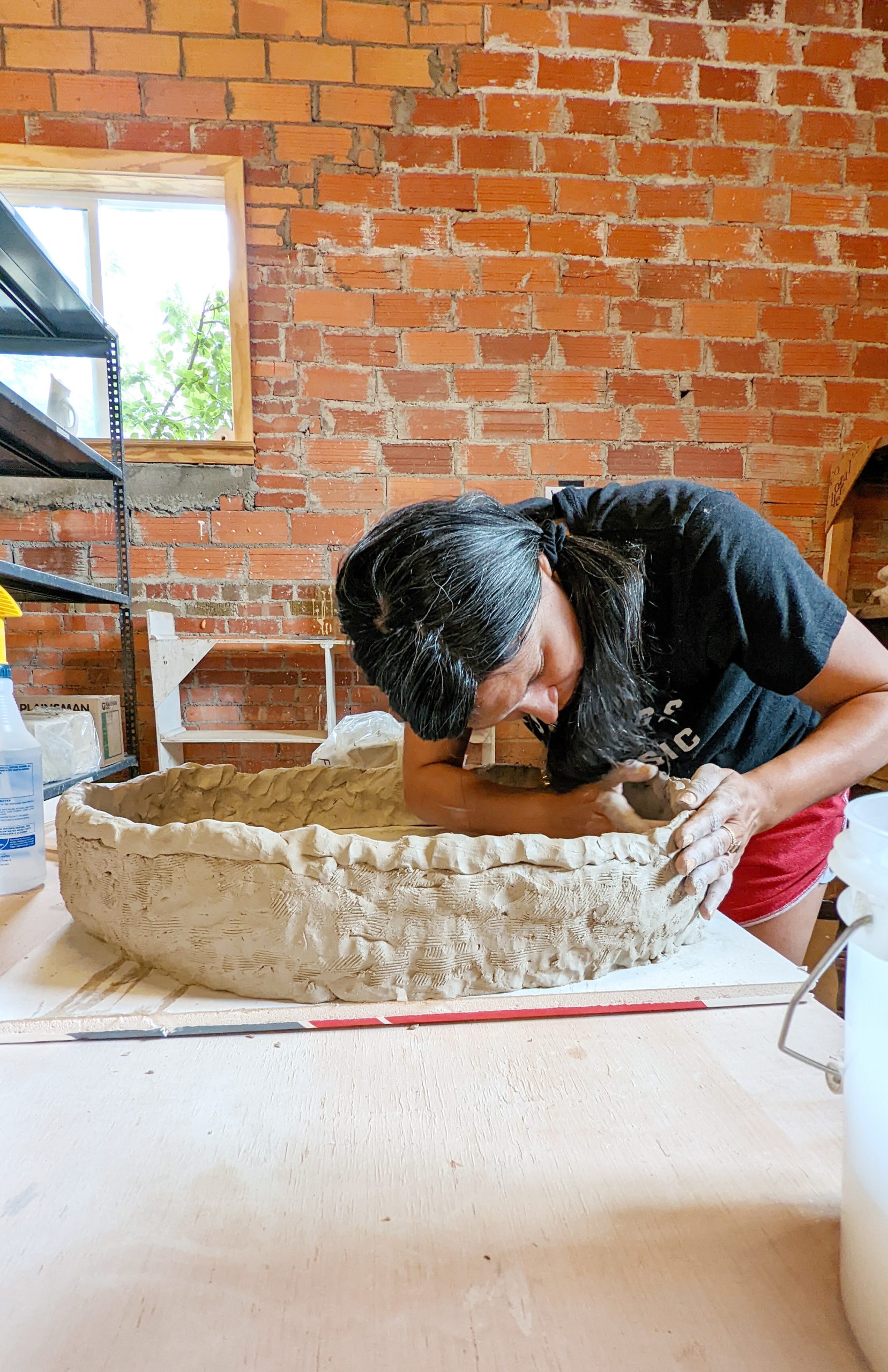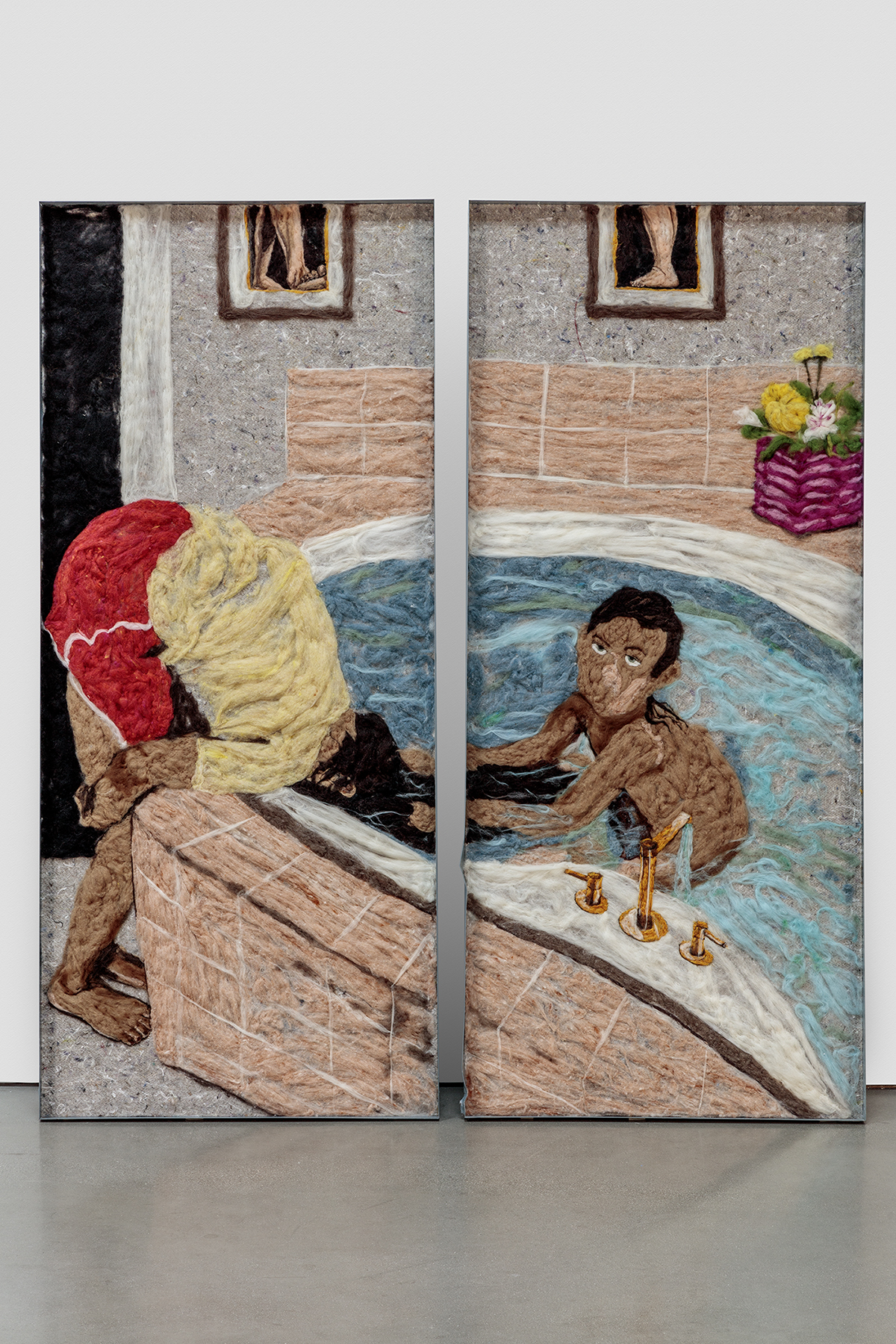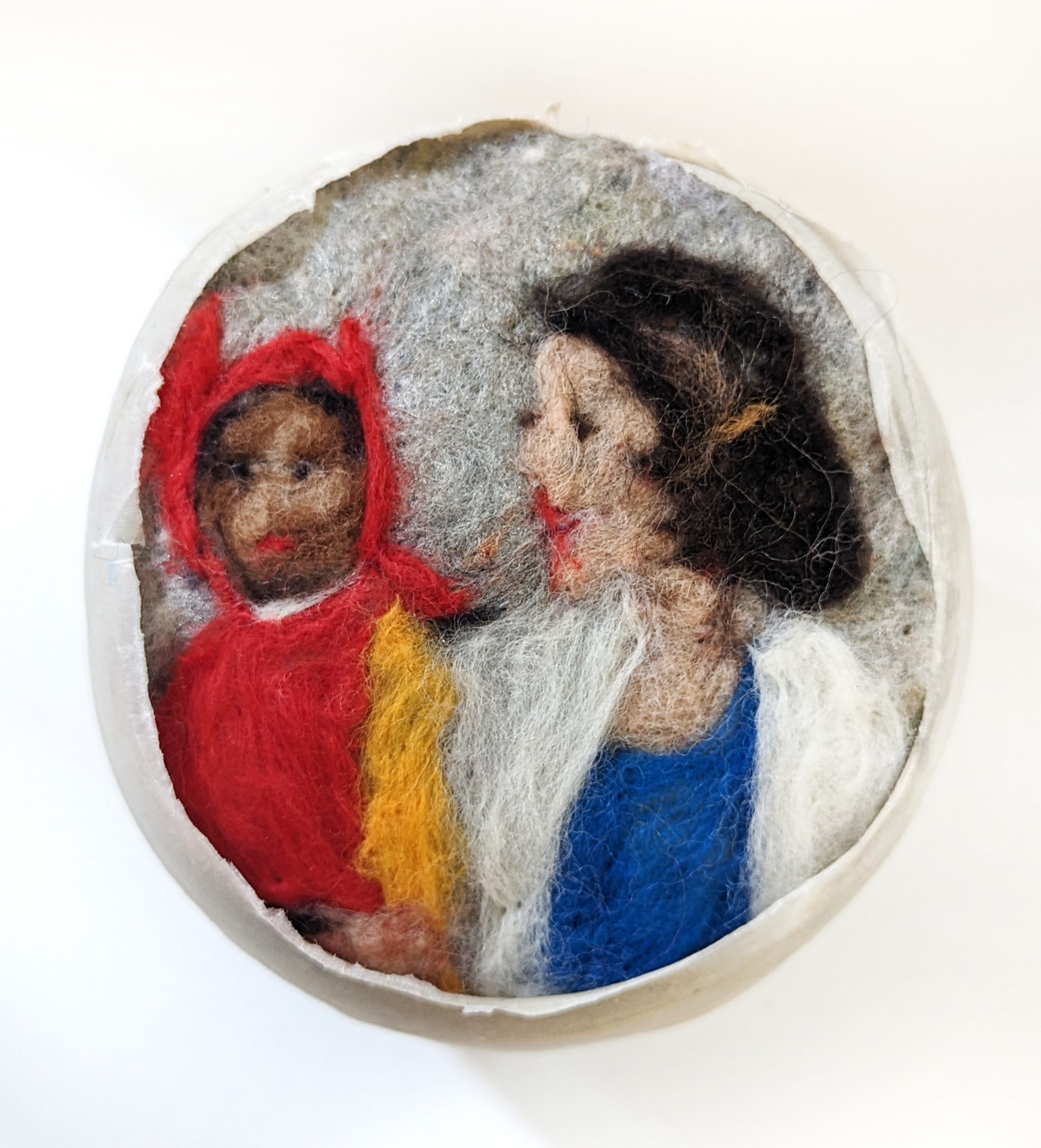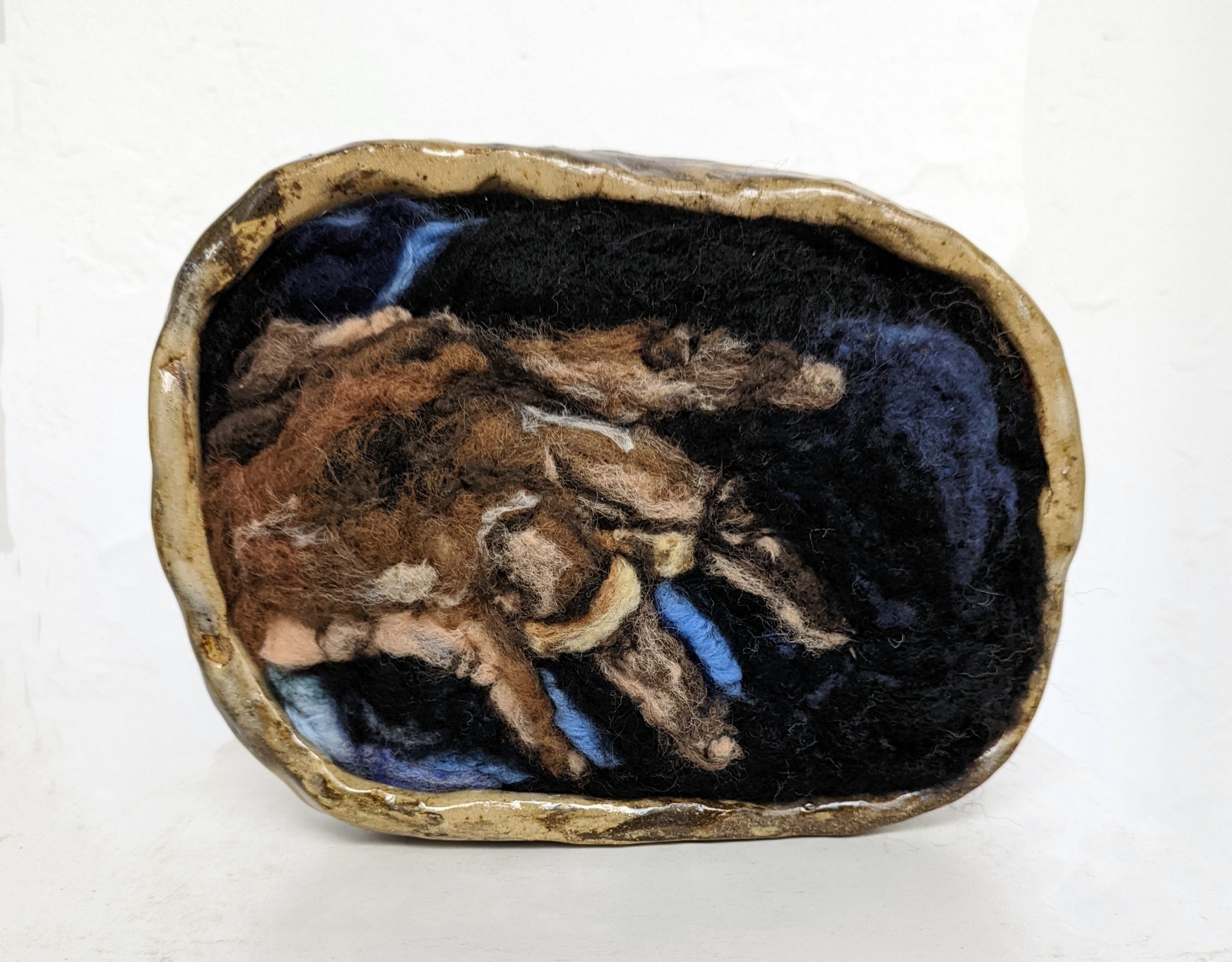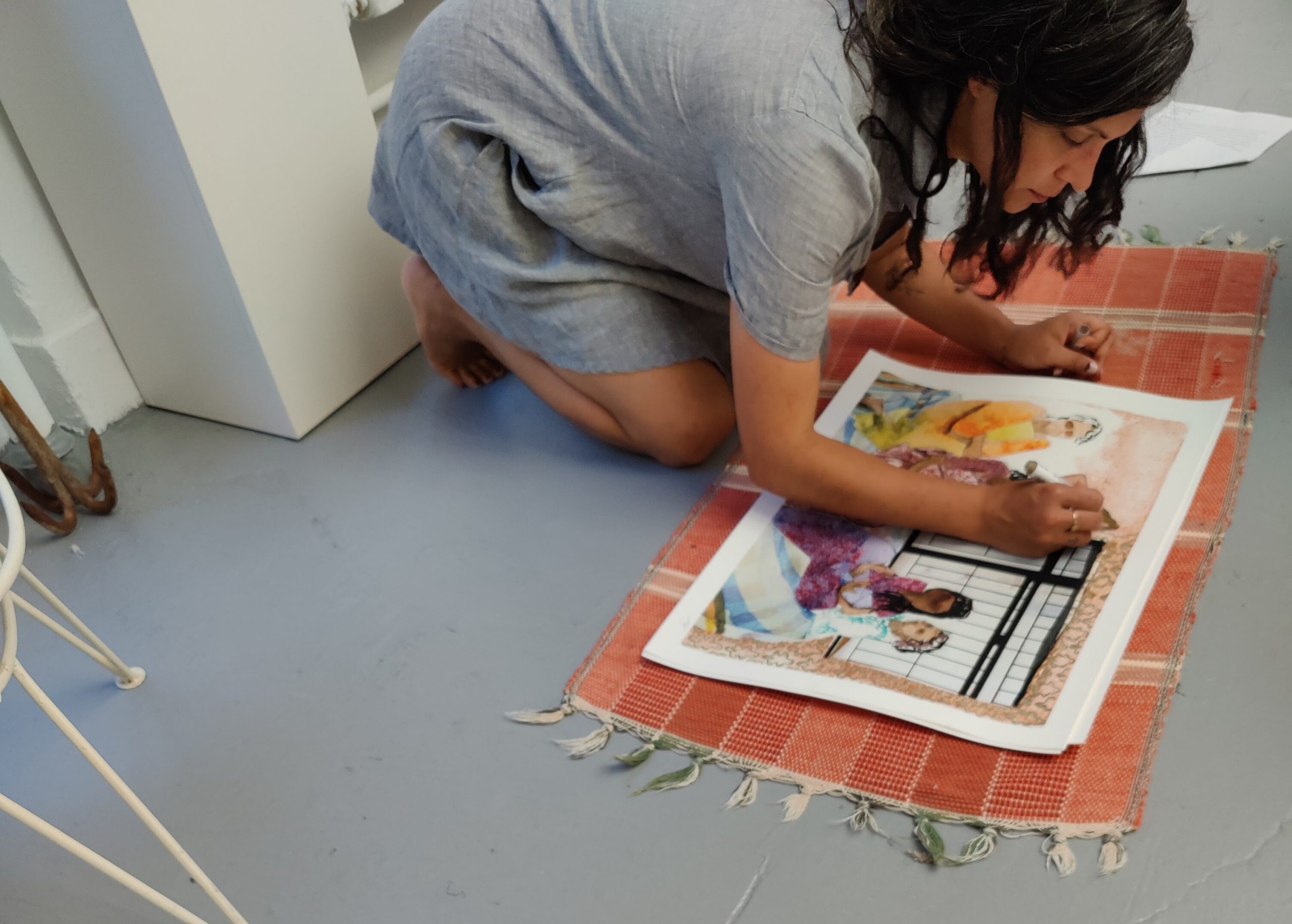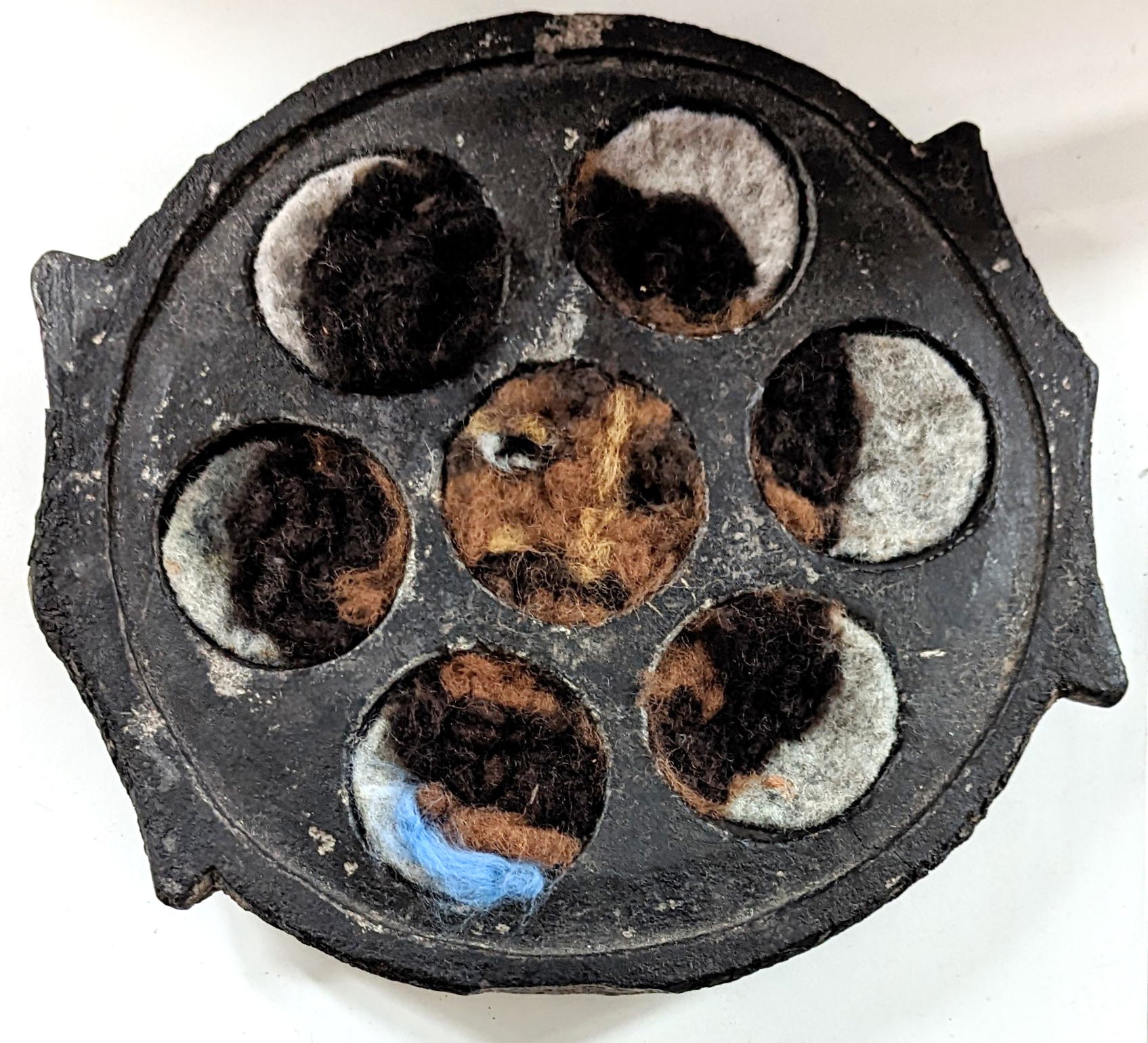
Where Things Happen #10 — Dec 2022
As first generation Indian-American, Melissa Joseph carries in her works particular importance given to hand gestures in Indian culture, as couriers of life experiences, connections, and stories.
Her practice appears to be driven by an endless desire for tactility,sensuously exploring materials and techniques, pushing their expressive potentials into vessels of collective memory and shared experiences.
Through a vast variety of media, her work investigates the endless human attempt to affirm,leave a trace, and claim one’s existential position through“making”.
In this sense her process-based practice seems to reflect how dialectic interactions we establish with materials activate the creative power of our minds to “make”, and simultaneously try to make sense of the world, through creation.
Upon arrival, Melissa welcomes me to her studio with her extremely kind smile and serene attitude.
She describes her practice as a way to connect people , but as I got to know her better, I believe that she has, as a person first, a truly great ability to immediately connect and get close to other humans.
This genuine energy and empathy funnels into her work, and in turn funnels itself to the viewer
Around the studio there is a series of works in a variety of media, found objects, felt, ceramics, trinkets, and photographs, reflecting the multifaceted dimensions of her practice.
Melissa confesses she’d describe herself as an object maker, rather than a painter or sculptor, converting objects into tools to connect people to relatable and nostalgic stories.
In fact, all the works appear to share an omnipresent interest for the human figure, people interactions, and memory.
The idea of family, and it’s stories in particular are clearly important in both Melissa’s practice, and in her choice to become an artist: as her father, an Indian-born surgeon married to her American mother, used to take weekly painting classes, and always held particular attention for his outfit and accessories, that she believes contributed in making her very aware from childhood of aesthetics, and the different qualities of fabric, and its processes.
She shows me her process, rearranging and configuring colored felt pieces: wetting them and compositing the figure, adding and applying the different pieces to form the image and composition and finally rolling them into one unified picture.
Then, once unrolled, she reveals the finished work.
As she unveils to me the process, I see how this technique results, both in material and conceptual terms, a perfect method to express her need to turn nebulous, subconscious memories and nostalgic family stories into something that can be manually handled, and thus reconnect physically with them.
One can ascertain that from these influences, Melissa developed an intriguing mix between Fine art and Textile Art: as she earned her BA in Individualized Study from New York University in 2003, an Associate’s in Textile Surface Design from the Fashion Institute of Technology in 2006, and finished with a Master’s in Art Education from the Rhode Island School of Design which brought her to teaching art, but also provided the opportunity to further study and experiment with fabrics and soft materials.
It was only In 2016, after her father’ death, that Melissa Joseph decided to pursue her career as an artist full time.
Today, her signature felt-based figurative works, employs an ancient wet felt technique, she explains to me, that can be dated back to the early civilizations in the Middle East, and has long been used in places as Syria and Turkey also as a method of construction due to it’s malleability and resilience.
This deep historical method and tradition of human making and living, Joseph wanted to connect with.
She explains to me how she has taught herself the technique by watching videos online, but that the medium finally allowed her to reconcile painting with textiles and the end result is indeed, very painterly.
Melissa explains to me that, like most of the techniques she likes exploring and engaging with, there’s a tension between chance and control, involved in each process. She composes an image building through layers, but in the end the final figure will be shaped up partially by chance.
This provides a fascinating abstract quality, as if they are foggy memories resurfacing on a mental screen.
Later, Joseph shows me how she has also started the needle felt, which allows her much more control in composing the figures.
Her images typically derive from family archives, the scenes she represents in her works deal with themes of diaspora, nostalgic longing of homeland and culture, and family histories that, beyond the personal references, can truly resonate with all different peoples.
Somewhere in between soft sculptures and fabric paintings, their tactility also encourages a more intimate and sensuous relation in approaching these works, which appear to be lyrically imbued by a nostalgic feeling of longing and a desire for reconnection.
They’re tridimensional, they expand in the space with volume beyond a flat surface, as if trying to re-embody these human moments in objects that can still channel and encourage some kind of skin contact, as conduits of lived experience.
Sometimes the felt works find their new habitats within found objects, which amplify further this memorial dimension of the images, and the longing for something that’s already passed, or by now too far away.
These simulacra though become, again, a sort of tools to imaginatively travel and reconnect with her family stories back in India, but also are open-ended enough to allow the viewer to channel through them their own stories and memories.
After her recent experience as a resident at the Archie Bray Foundation, Melissa has been pushing further her experimentation with the ceramic medium, resulting in similarly abstract compositions which, through the viewer’s intuitive association, reveal entire scenes.
Curiously they remind one of the fascinating prussian hardstone intarsia where the figures emerged organically from the veins and movements of the stones. Joseph’s ceramics follow a similar organic process of addition and overlaying different layers such as felt: letting the scenes reveal themselves only after the end of the firing. These ceramic works further exemplify the artist’s interest in working within continuous tension between her creative control, the intuition of materials characteristics, and the unexpected results from the art making process, letting the physical and chemical attributes interfere and intersect.
A restless experimenter, we can expect much more from Melissa Joseph’’s practice, both in terms of material and emotional research across the different media and processes.
With great creative freedom, Joseph aims at constantly pushing the expressive possibilities of materials, bridging incongruencies and investigating the ability of human making as a tool of creation, placemaking and existential occupation, and in turn pushing forward potential connections between individuals of different cultural and historical backgrounds.






















